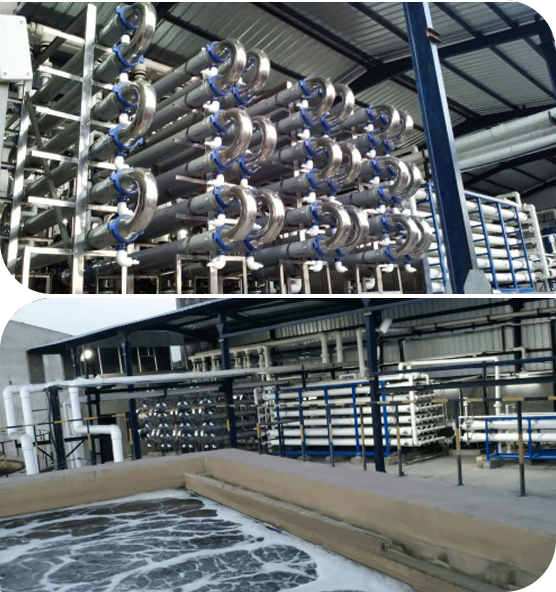
Waterman Engineers Australia is probably the leading companies of Zero Liquid Discharge process. A ZLD process is a therapy procedure which can be employed to remove all of the liquid waste from the process. The purpose of ZLD drinking water therapy is to reduce wastewater economically and produce potable h2o that is definitely healthy for standard use. Zero discharge program is an advanced cure strategy that comprises ultrafiltration, reverse osmosis, evaporation and fractional electro deionization. And we're a well-regarded supplier of ZLD units.
In lots of Industries, like ability, oil & gasoline, chemicals, mining and Some others, a large amount of wastewater is created that has to be managed. Conventionally, this discharge of wastewater is completed via a plant outfall to your surface drinking water body like an evaporation pond, or sometimes deep well injected. These techniques lead to a lot of environmental concerns by the public in several locations of the earth, as h2o is actually a scarce resource and its administration ought to be monitored. These problems have resulted in the establishment of ZLD processes by quite a few industries to reduce their environmental footprint and improve sustainability. And, Waterman Engineers Australia are ideal ZLD suppliers you can find for this system.
Qualities OF ZERO LIQUID DISCHARGE Technique
The Houses of the Zero Liquid Discharge procedure can vary dependant upon the unique design and engineering employed. Even so, some prevalent Houses of ZLD devices include things like:
H2o Conservation: Considered one of the key aims of ZLD programs is usually to conserve h2o by reducing the discharge of liquid waste in to the atmosphere.
High H2o Purity: ZLD programs are intended to generate higher-quality h2o that is certainly free of charge from impurities and contaminants, that makes them suited to use in many industrial procedures.
Versatility: ZLD systems in many cases are made to support a broad range of enter liquid streams, that makes them adaptable and ideal for use in various industries.
Superior Wastewater Treatment: Zero liquid discharge programs use Sophisticated wastewater cure methods to clear away impurities and contaminants in the effluent, manufacturing higher-excellent water.
Waste Reduction: ZLD devices help lessen squander by reducing the amount of liquid waste that should be disposed of and by developing a concentrated, sound waste substance that can be securely disposed of.
Strength Performance: ZLD units may be Vitality-intensive due to superior Power needs of evaporation and also other wastewater cure procedures. Having said that, innovations in technology are creating Zero liquid discharge methods much more Vitality-effective and cost-effective.
Waterman Engineers Australia manufactures Zero Liquid Discharge (ZLD) systems designed to remove all liquid squander, aiming to create potable drinking water and reduce environmental influence. Their ZLD systems ordinarily involve ultrafiltration, reverse osmosis, evaporation, and fractional electro deionization. Critical technologies used are Slipping Film Brine Concentrators, Compelled Circulation Crystallizer, and Some others, by using a two-stage means of pre-concentration and evaporation/crystallization to recover and reuse drinking water. These methods are adaptable to distinctive industries, emphasizing drinking water conservation, higher drinking water purity, waste reduction, and Electricity efficiency. Complex specs are various and customizable, taking into consideration elements like drinking water resource, circulation rate, and feed drinking water high-quality.
The need for Zero Liquid Discharge (ZLD) devices arises through the requirement to address environmental worries related to drinking water scarcity and air pollution. In industries like power, oil & gasoline, and mining, wide quantities of wastewater are generated. Usually, this wastewater is discharged into bodies of h2o, creating pollution and depleting clear h2o resources. ZLD techniques intention to reduce these impacts by managing and recycling wastewater within the industrial method, therefore conserving drinking water, cutting down squander, and promoting sustainability.
When considering the specialized specs of a Zero Liquid Discharge (ZLD) program, critical features to deal with include the h2o resource it will eventually address, the system's flow rate, the standard of feed h2o, the phases of treatment method concerned, the recovery rate of h2o, procedures for focus disposal, components of building, operating conditions, and procedure automation and Regulate. These components ensure the system's success, toughness, and efficiency in managing and recycling industrial wastewater.
Zero Liquid Discharge (ZLD) vegetation provide benefits which include drinking water conservation, waste reduction, and air pollution avoidance, contributing to environmental sustainability. They're relevant in industries like electricity generation, oil and fuel, chemical substances, and mining, where they help in managing industrial wastewater proficiently, lowering the ecological footprint, and complying with strict environmental rules. These methods are important in locations struggling with water scarcity and for industries aiming to boost their sustainability and operational performance.
FAQs for any Zero Liquid Discharge (ZLD) procedure usually handle its operational principles, Value-success, upkeep necessities, environmental impact, applicability across a variety of industries, and regulatory compliance. These questions assist end users understand the program's Positive aspects, technological requires, and suitability for their particular wastewater management wants.
one. Zero Liquid Discharge (ZLD) is often a wastewater procedure procedure created to remove all liquid waste.
2. The program's parts are motivated by the particular industrial approach, wastewater composition, and regulatory necessities.
three. Effluent treatment method vegetation take away pollutants from textile effluents to avoid environmental contamination.
4. Positive aspects contain water conservation, air pollution reduction, and regulatory compliance.
five. The purpose is to reduce environmental effect by recycling water and reducing squander.
6-9. Effluent treatment crops are phases in wastewater therapy: Main (Actual physical separation), secondary (Organic remedy), and tertiary (Sophisticated treatment).
ten. Unit functions incorporate filtration, sedimentation, biological procedure, and disinfection.
11. Restricting parameters are components that have an effect on the therapy's performance, like pH and contaminant concentration.
twelve. Design and style considerations involve circulation rate, effluent composition, and ideal top quality of treated drinking Zld System Manufacturer Zero Liquid Discharge System water.